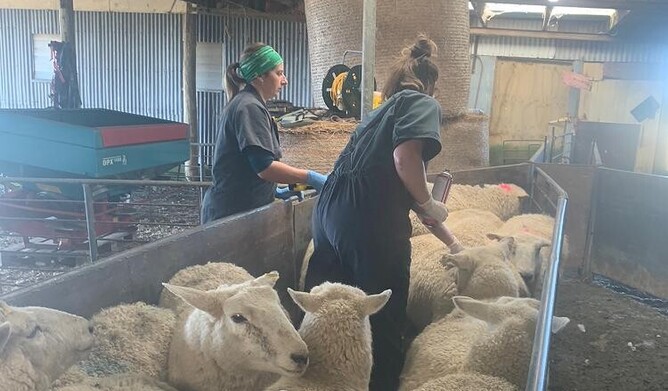Follow our very own VetSouth trial flock’s performance over lambing with a look at the latest data.
Well, it’s been an interesting few months since our last update. We have collected the data from scanning and lambing from our very own VetSouth trial flock of two-tooths.
Trial recap: We have selected 200 two-tooths from a farm in Southland to be a part of an ongoing VetSouth trial programme, in the hope of gaining further insight into sheep performance and health. FarmIQ are on board and all animals have been electronically tagged and recorded using their software.
We ran the 200 girls through the yards in February for a pre-tup body condition score, which averaged 2.6. Interestingly, we got the same average BCS when we did it again pre-lambing in August. This is a good result, but next year we will target a BCS of 3 or above for all of the mob.
Scanning
It was great to get our first scanning results uploaded. These consisted of:
- 84% multiples
- 16% singles
- 1 dry
How was the overall lambing mortality?
- 1 x ewe died after a uterine prolapse pre-lambing.
- 1 x lamb - a poor twin that would not feed, despite attempts to encourage it onto the ewe in the yards.
- 1 x lamb from a twin set which still had film over its mouth. We were able to successfully mother-on an orphan lamb by covering it with the dead lamb’s skin.
- 1 x lamb from a set - born second. See post mortem findings below.
- 1 x lamb from a set with the same presentation as the lamb above.
- 1 x set of triplets. Post mortem findings below.
Post mortem results
Dead twin: Outwardly, the lamb was a darkened colour but not decomposed, suggesting it had only passed a couple of days before it was born. Upon post mortem, it was found to have excess fluid, about 60ml, in its thorax. We will review this further, looking at possible Vitamin E deficiency in the ewe.
Dead triplets: All were found dead in the paddock and taken into the clinic for a post mortem, with samples sent away for testing.
Outwardly, they looked to be in differing stages of gestation. One presented like a full-term, healthy lamb, while the other two appeared to be mummified/mummifying.
Upon post mortem, the 'normal' looking lamb was found to have swelling around the head, indicating some form of birthing difficulty. This lamb had taken a breath but had not fed. The cause of death was likely dystocia or exposure.
The other two of the triplet were too necrotic to get any information based on the post mortem exam. Samples were taken and tested for Toxoplasmosis, Listeria, Salmonella, and Campylobacter, all of which came back negative. Unfortunately, there was no diagnosis for these cases.
Who needed help?
We had to assist with two twin lambings. In one case, the first lamb had gotten stuck during labour, and in the second case, both lambs were trying to come at once.
What’s next?
We will continue to monitor the two-tooths over the next couple of seasons, recording their weights, body condition scores and mineral testing data.
Building up a bank of information in the initial stages is key to us learning more about the sheep and deciding where to take the trial going forward.
Thanks, as always, to the vets and techs who have helped us collect the data and perform the post mortems.
- Carey Buchanan

